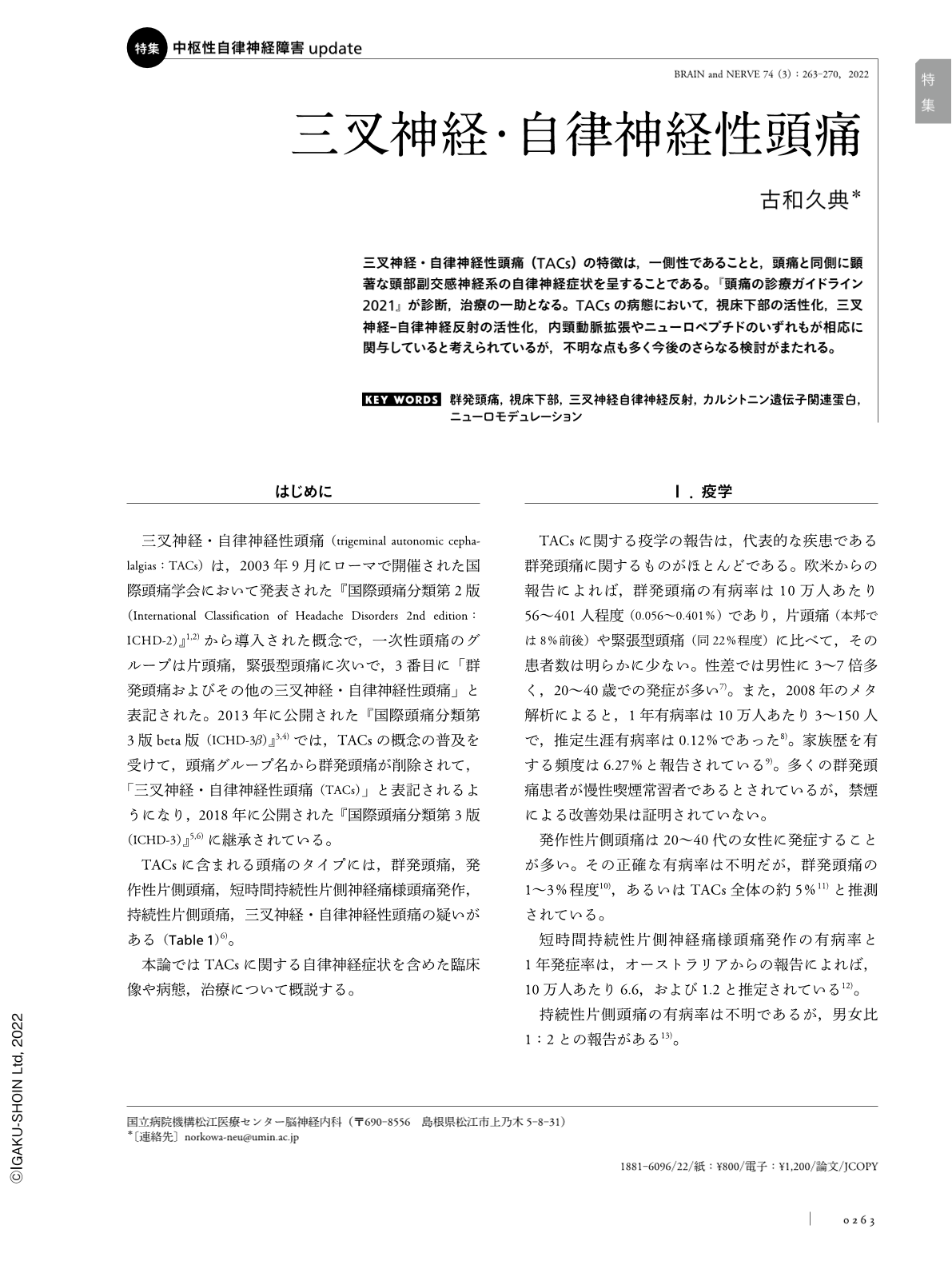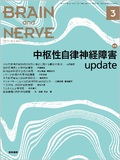Japanese
English
- 有料閲覧
- Abstract 文献概要
- 1ページ目 Look Inside
- 参考文献 Reference
三叉神経・自律神経性頭痛(TACs)の特徴は,一側性であることと,頭痛と同側に顕著な頭部副交感神経系の自律神経症状を呈することである。『頭痛の診療ガイドライン2021』が診断,治療の一助となる。TACsの病態において,視床下部の活性化,三叉神経-自律神経反射の活性化,内頸動脈拡張やニューロペプチドのいずれもが相応に関与していると考えられているが,不明な点も多く今後のさらなる検討がまたれる。
Abstract
The term trigeminal autonomic cephalalgias (TACs) was introduced in the 2nd edition of the International Classification of Headache Disorders, and has been retained in the 3rd edition. TACs include cluster headache, paroxysmal hemicrania, short-lasting unilateral neuralgiform headache attacks, hemicrania continua, and probable trigeminal autonomic cephalalgia. Headaches classified as TACs share clinical features with unilateral headache and usually present with prominent lateralized and ipsilateral cranial parasympathetic autonomic features, including the following: (1) conjunctival injection and/or lacrimation, (2) nasal congestion and/or rhinorrhea, (3) eyelid edema, (4) forehead and facial sweating, (5) miosis and/or ptosis. “Clinical Practice Guideline for Headache 2021 (Japanese version)” will serve as a useful aid for diagnosis and treatment of TACs. Currently, hypothalamic activation, activation of the trigeminal-autonomic nerve reflex, internal carotid artery dilatation, and the action of some neuropeptides are implicated as pathophysiological mechanisms underlying TACs; however, it is not unequivocal. Further studies are warranted to gain deeper insight into several unclear aspects associated with TACs.

Copyright © 2022, Igaku-Shoin Ltd. All rights reserved.


